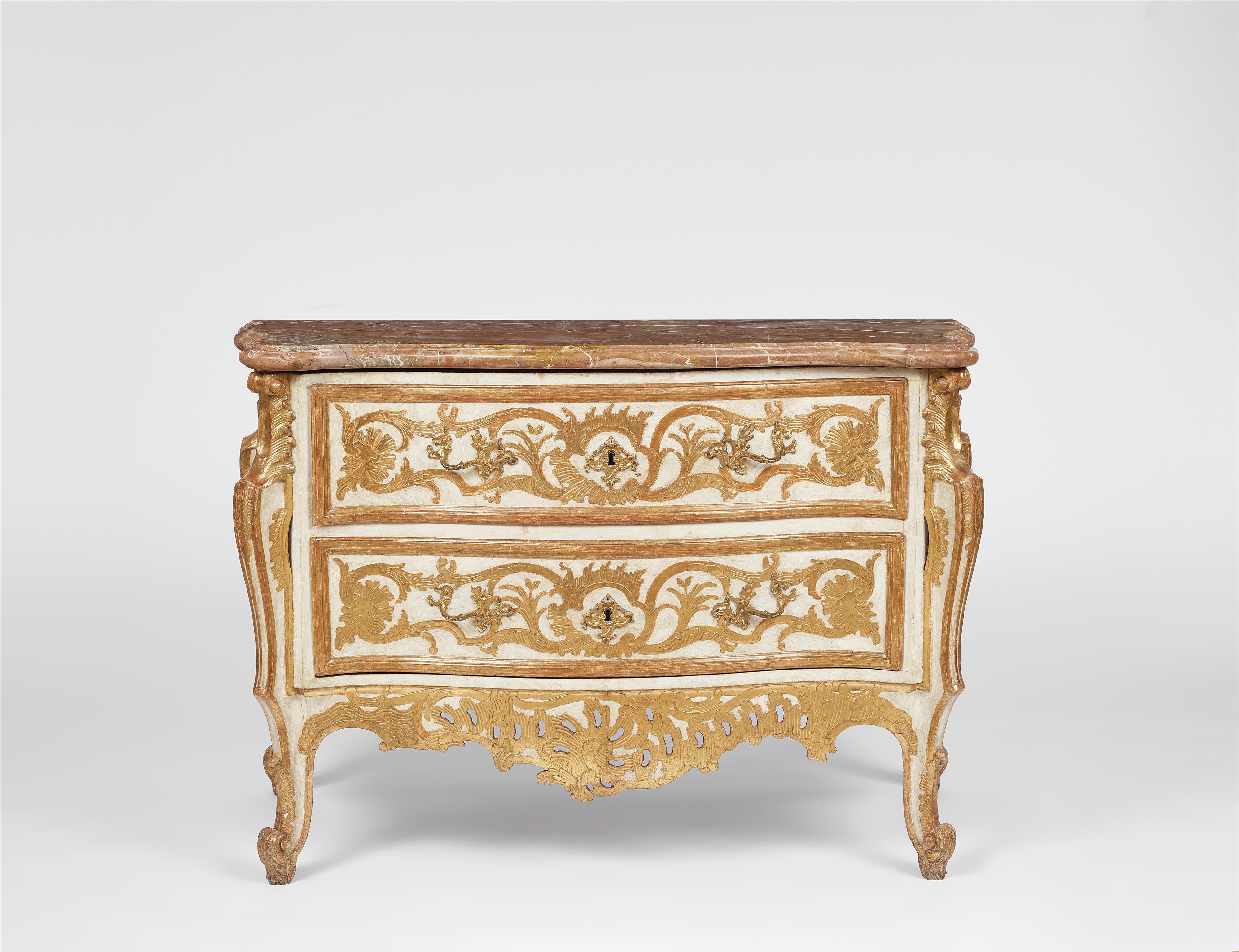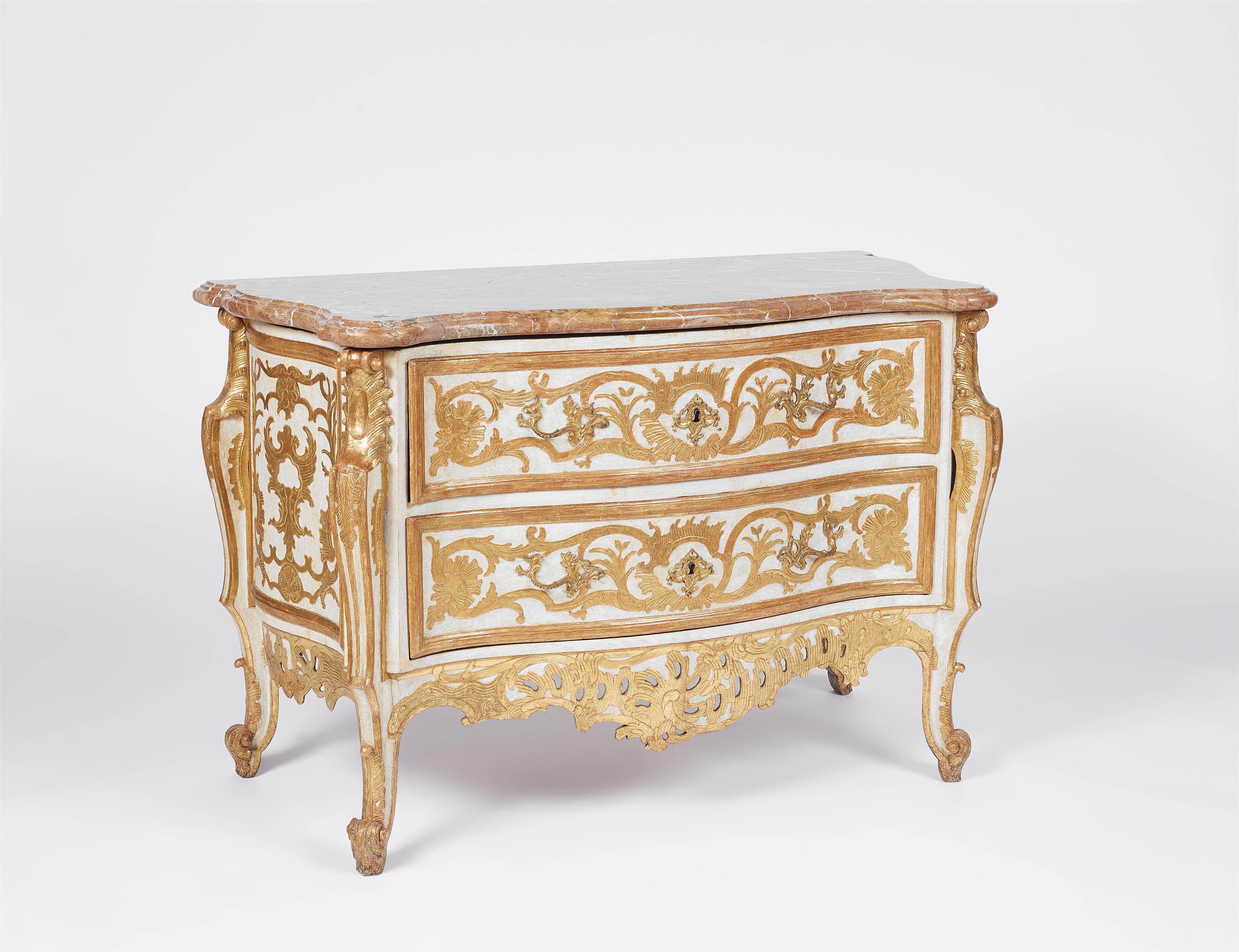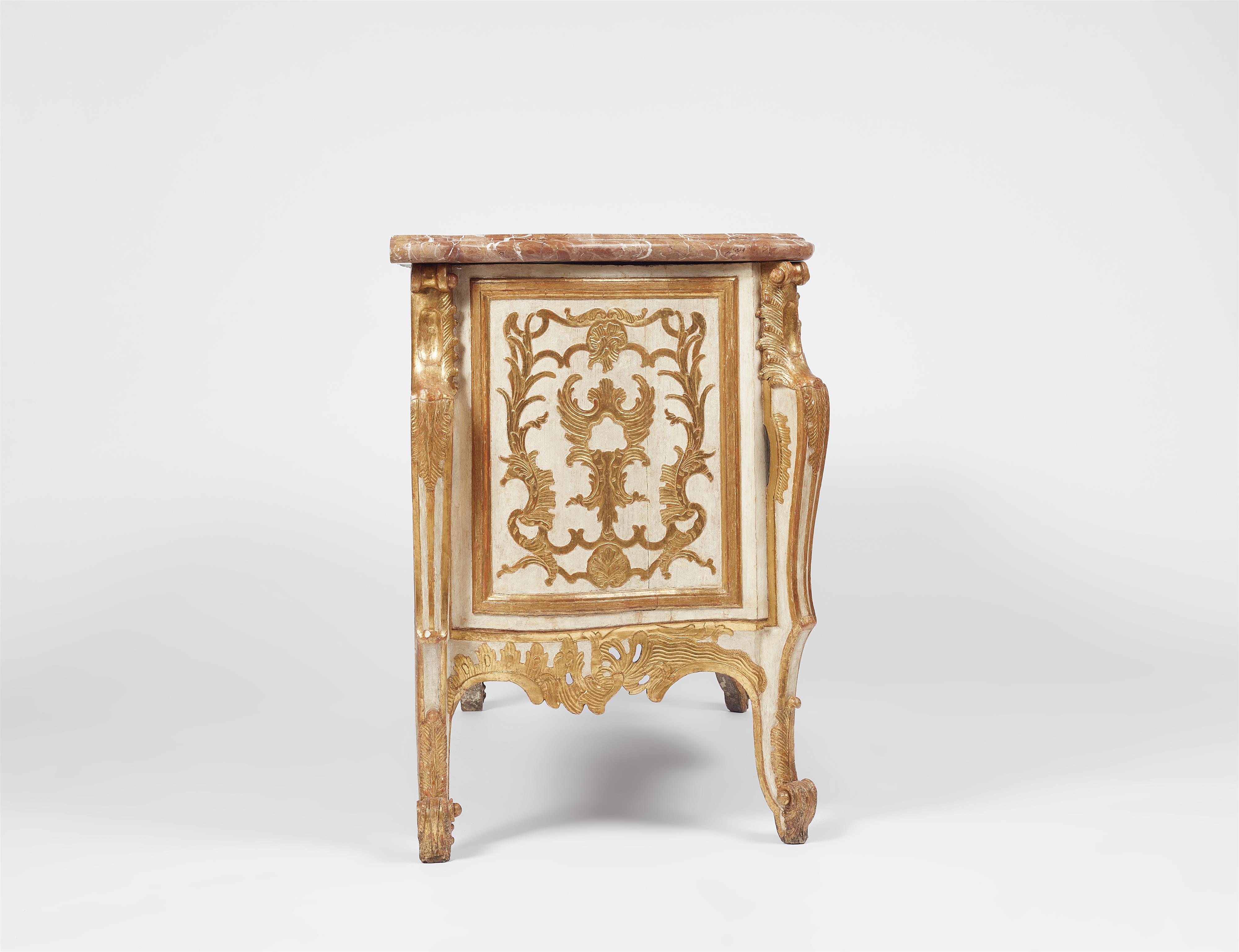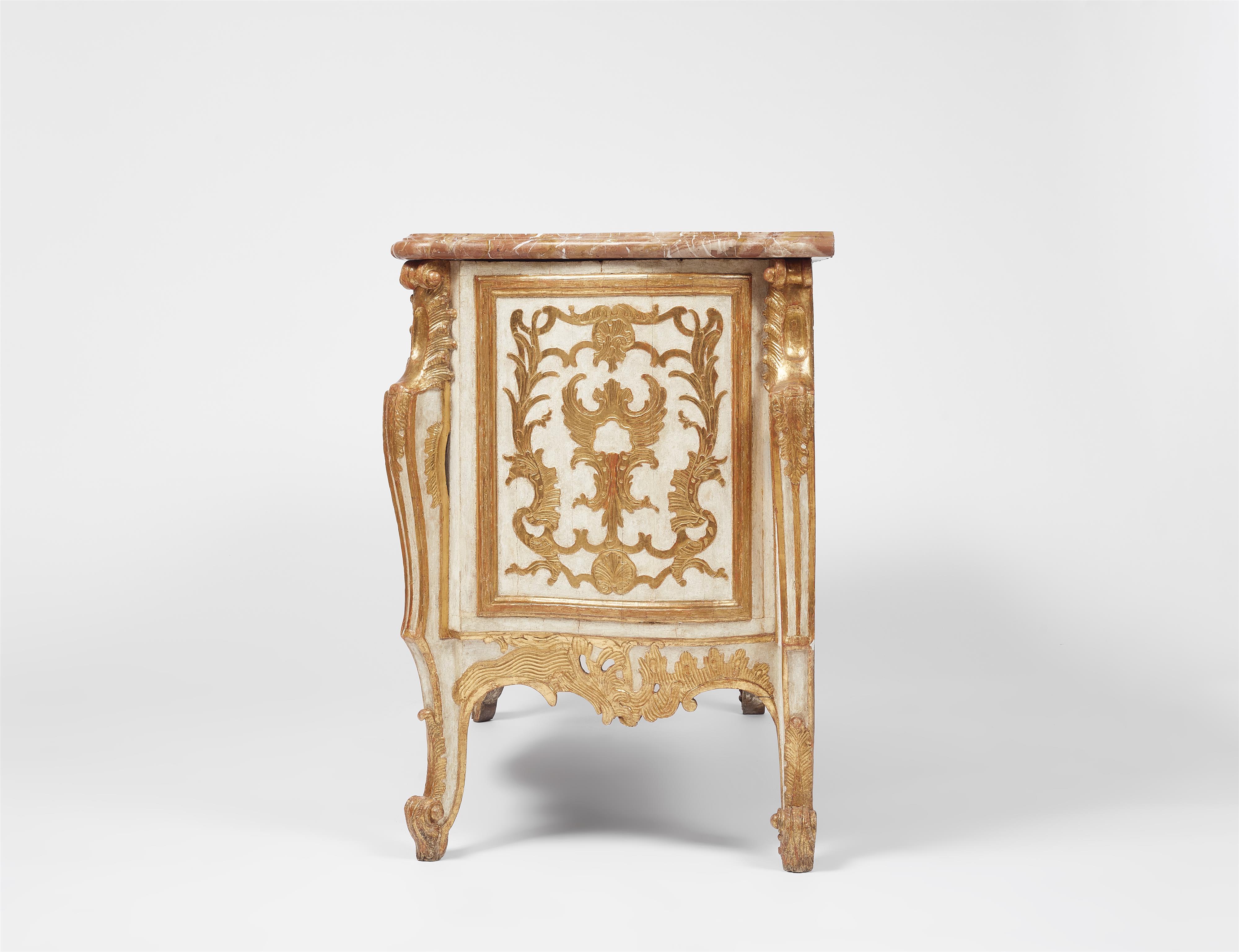An important Munich chest of drawers
Carved conifer wood, painted, gilded plaster appliques, ormolu mountings, pale red marble top. With two drawers and richly carved and gilded apron. With large rocaille motifs within mouldings. Large brush mark ligated FA under the marble top. The marble restored over breakages. H 82, W 125, D 57 cm.
Design attributed to François de Cuvilliés the Elder, presumably produced by Thomas Sailler or Johann Michael Schmidt.
François de Cuvilliés (1695 - 1768) became the leading architect in Munich as of 1730. His appointment marked the transition from the Régence style to the Rococo, decisively executed by Joseph Effner. His designs include the Rich Rooms of the Munich Residenz and the Amalienburg in Nymphenburg Park, both highlights of the German Rococo style. He also published numerous writings with treatises on architecture and designs for entire interiors or even individual pieces of furniture. Sheet 6 of his "Livre de lambris" can be regarded as the model for this and other chests of drawers.
Very similar in structure, slightly different in detail, is a chest of drawers in the collection of The Metropolitan Museum of Art. Here, too, we find the strong emphasis on the mouldings and the same design of the edges with curved angles, after a design by Francois Cuvilliés. The execution is attributed to Johann Michael Schmidt, although, according to Wolfram Koeppe, this cannot be proved with certainty.
Provenance
L. Bernheimer, Munich.
Weinmüller, Munich.
Private collection, Westphalia.
Literature
Illus. in Schmitz, Deutsche Möbel des Barock und Rokoko, Stuttgart 1923, p. 172.
Illus. in Kreisel, Die Kunst des deutschen Möbels, vol. II, Munich 1970, Abb. 439.
Cf. a chest of drawers in the Metropolitan Museum of Art, New York, acc. no. 28.154.








